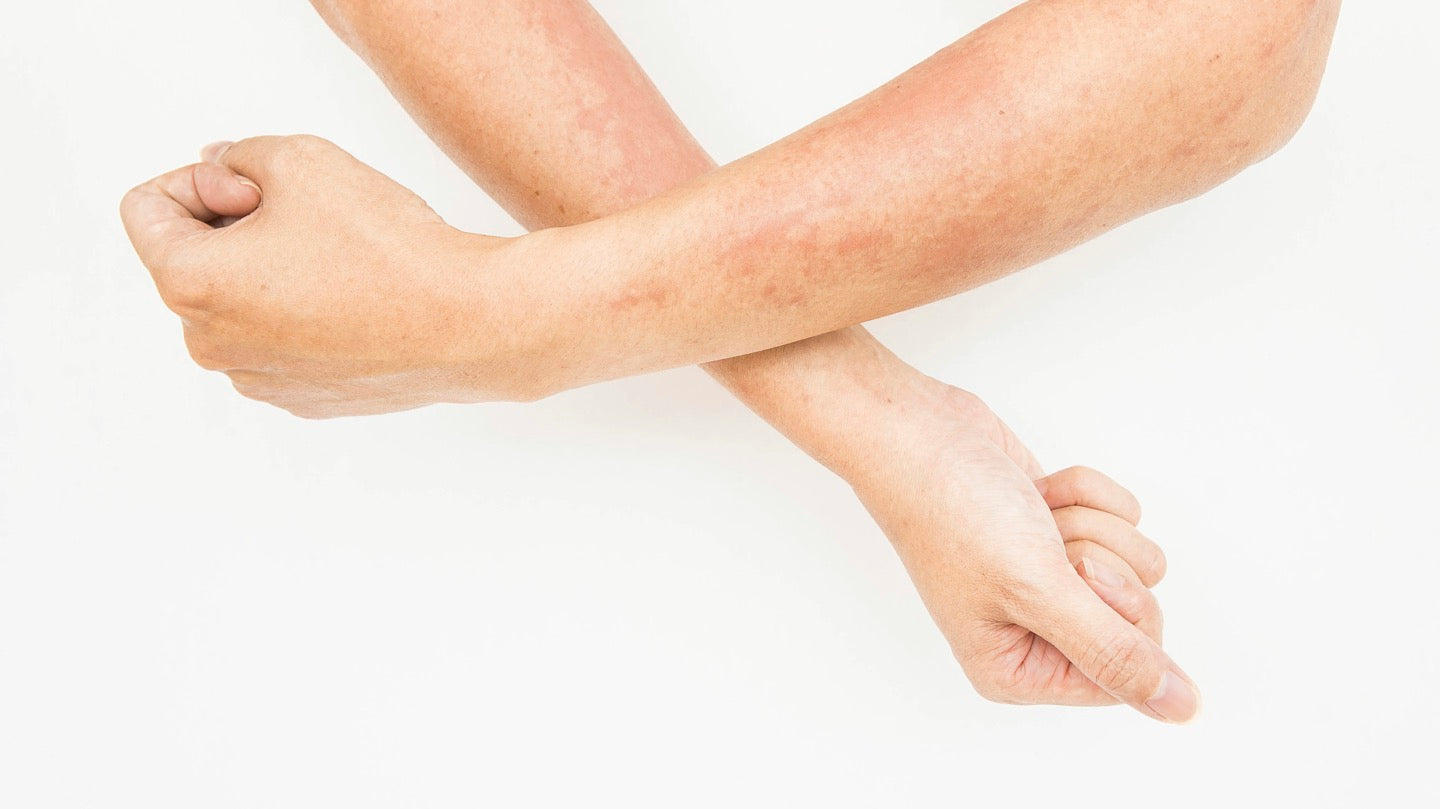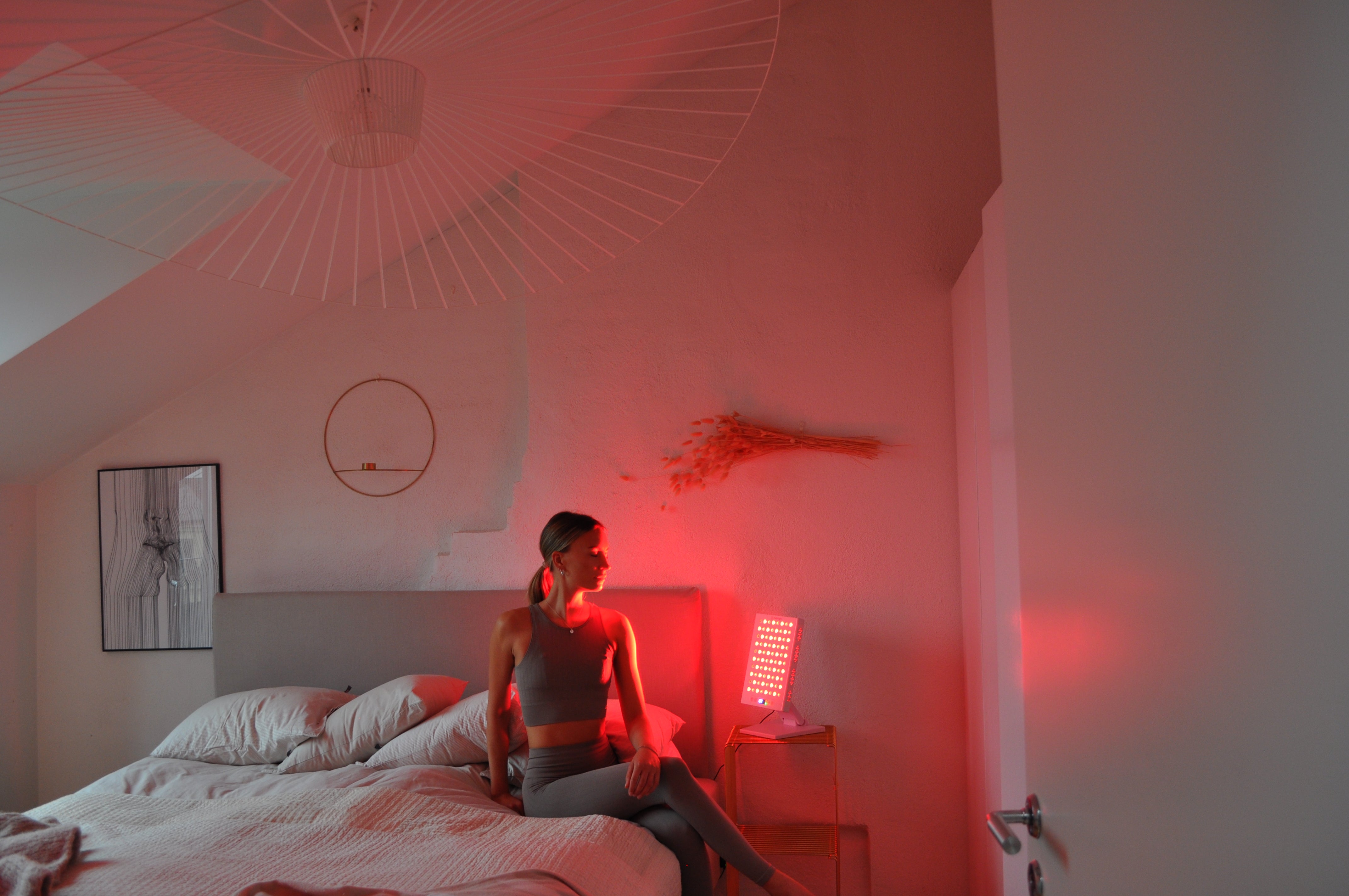Psoriasis is an autoimmune disease that affects, among other things, the skin and joints in the body. "Autoimmune" means that the body's immune system incorrectly attacks various tissues and structures in the body. In the case of psoriasis, the skin is attacked which flakes, itches and in many cases turns into ulcers. Even joints can be affected in psoriasis. Sun therapies have long been used as part of treatment. Unfortunately, sunlight does not only have positive effects as too much sun can lead to negative effects. Here, therapies with red and infrared light have become popular. This is because they have an effect, but without the side effects associated with sunlight.
Since inflammation drives psoriasis, most health care therapies are about reducing those processes. Research also indicates that the inflammation that occurs in psoriasis affects the entire body and increases the risk of cardiovascular disease and type II diabetes. Therefore, it is of the utmost importance to get the inflammation under control. To achieve this, anti-inflammatory drugs such as cortisone and chemotherapy are used. Unfortunately, these treatments are far from free of side effects and therefore it is of the utmost importance that you do what you can through lifestyle.
What affects psoriasis?
It has long been known that factors such as stress, alcohol, diet and obesity affect the activity of psoriasis. Here it is important to minimize stress, be moderate with alcohol and avoid excess weight as much as possible. The diet is also important as it can affect both ways. Eating a lot of vegetables, berries, fiber, fatty fish and many spices seems to be positive in mitigating the disease. If you base your diet on these foods, you will not only have a positive effect on psoriasis, but also on a number of other lifestyle factors. Conversely, there are many foods that can fuel inflammatory processes and thereby make life worse for the person with psoriasis. Such aggravating foods are fried and heavily industrially processed foods such as chips and fast food. In addition, refined carbohydrates and sugar are something that should be minimized.
It has long been known that sunlight has a positive effect on psoriasis. Sun therapy has been one of the classic methods for reducing the negative effects of the disease. The problem with sunlight is that it can also damage the skin, at least in high doses. Can you get the good effects of light without the harmful ones? The answer to the question seems to be a "yes".
Infrared and red light for psoriasis
Sunlight provides a wide spectrum of light. Both things we can perceive with our eyes, but also things that lie outside our field of vision. UV light is the kind of light that makes us tan in the summer, but it is also this type of light that can damage the skin and is the one we want to access after all when we use tanning beds. There is also infrared light. It is light of such a long wavelength that our eyes cannot perceive it. Infrared light, but also visible red light, has been shown to be able to produce a lot of the positive effects that sunlight delivers. In addition, the frequency is so low that there is no risk of side effects during normal use. Red and infrared (NIR) light has become very popular to use for psoriasis, and research suggests that it can actually relieve symptoms without side effects.
How does it work?
Light of certain frequencies, such as red and infrared light, can activate so-called photoacceptors inside our cells. One such is cytochrome C oxidase. and when this is activated, a number of things happen in the body which, among other things, involve improved healing and reduced inflammation. The researchers talk about biophotomodulation, while the users often talk about "magic". In addition, tissue oxygenation can be positively affected and the body's own production of antioxidants increases. Together, this is believed to have positive effects on inflammatory conditions, including psoriasis.
An advantage of this form of therapy is that the risk of side effects is non-existent and therefore it may be a good idea to try this type of therapy. If you think you get good effects from it, it might be an idea to invest in such a lamp that you can use at home, which of course makes it both easier and cheaper to get a regular treatment. The fact that you can also get a wide range of other health benefits is a nice bonus!
References:
Derek Ho, Eugene Koo, Andrew Mamalis, Jared Jagdeo. A Systematic Review of Light Emitting Diode (LED) Phototherapy for Treatment of Psoriasis: An Emerging Therapeutic Modality. J Drugs Dermatol. 2017 May 1;16(5):482-488.
MM Kleinpenning 1, ME Otero, PEJ van Erp, MJP Gerritsen, PCM van de Kerkhof. Efficacy of blue light vs. red light in the treatment of psoriasis: a double-blind, randomized comparative study. J Eur Acad Dermatol Venereol. 2012 Feb;26(2):219-25. doi: 10.1111/j.1468-3083.2011.04039.x. Epub 2011 Mar 24.
Glynis Ablon 1. Combination 830-nm and 633-nm light-emitting diode phototherapy shows promise in the treatment of recalcitrant psoriasis: preliminary findings. Photomed Laser Surg. 2010 Feb;28(1):141-6. doi: 10.1089/pho.2009.2484.
Author: Martin Brunnberg






Share:
RLT and inflammations
Red light therapy and stem cells